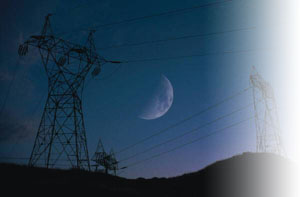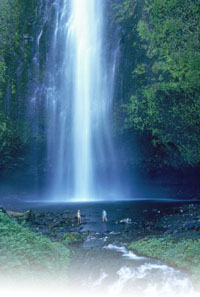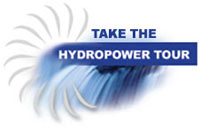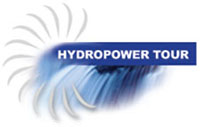
Hydropower: the Forgotten Green Energy
A closer look at how water power can improve our life on Earth
Welcome!

Renewable energy promises us a cleaner, more independent future. Yet one renewable source — water power — is already so established that we sometimes forget to include it in our "green energy" discussions.
This site is dedicated to helping you learn more about why water such a remarkable source of energy, and how we can use it to make our planet a nicer place to live.
The Dirty Secret of Electricity

Our story begins with electricity which, on the surface, looks like wonderfully clean power. For example, an electric car emits no pollutants, no CO2, and hardly any noise. What could be greener?
So it may come as a surprise that “clean electricity” has a dirty secret. 90% of U.S. electricity is generated using fossil fuels and nuclear energy; in fact, electricity generation is our single largest contributor to human-caused CO2 emissions.
The remaining 10% of our electricity comes from clean, renewable energy sources such as water, wind and solar – with hydropower (water) being the clear leader. Today, hydropower provides 70% of the electricity we generate from renewable energy sources and is growing fast, helping to stabilize our climate, reduce harmful pollutants and create new jobs.
Hydropower is 100% clean, green energy. It consumes no natural resources, produces no emissions, and creates zero waste. And did you know that, compared to all other energy sources, hydropower is the least expensive, most efficient method for generating electricity? In fact, it is the only renewable energy source that does not require government subsidies to be price competitive.
Take the Hydropower Tour
Intrigued? We invite you to take the Hydropower Tour, a four-part introduction to the environmental – and economic – advantages of hydropower.

Part 1: How Hydropower Works:
A quick overview of why water is a source of energy, and how we can convert that energy to electricity. (A more technical discussion can be found in the Guide to Hydropower.)
Part 2: Types of Hydropower:
A contrast between Reservoir Hydropower (the familiar hydroelectric dam) and Streaming Hydropower (no dam, no reservoir).
Part 3: Environmental Considerations:
A discussion of the environmental impacts of hydroelectric systems and how they compare with other types of generation.
Continue to the Hydropower Tour


